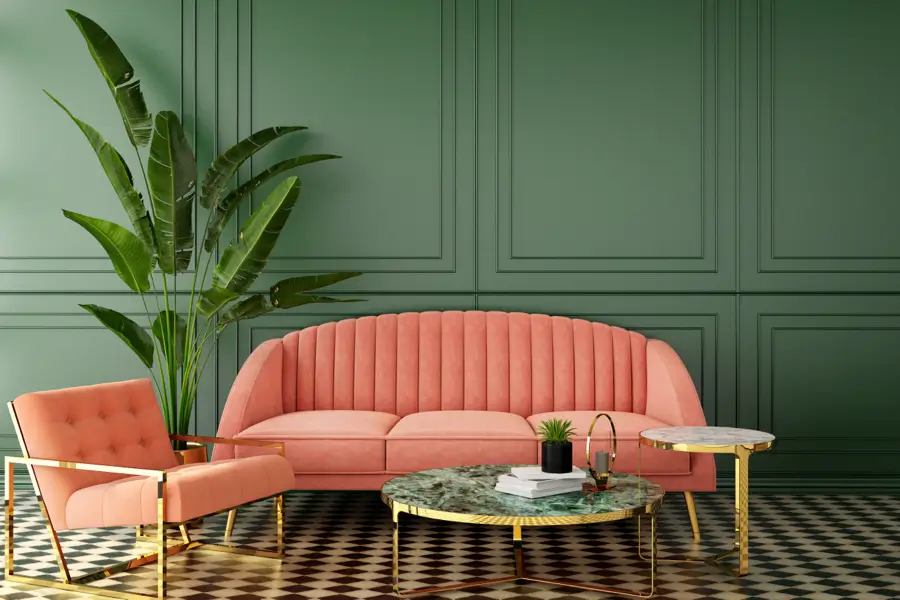
INSPIRATION

The National Council for Interior Design Qualification describes an interior designer as a professional who “is qualified by education, experience, and examination to enhance the function and quality of interior spaces.” This definition implies that interior designers can offer services in a wide range of areas, from space planning to furniture selection.
In reality, many designers choose to focus on one area of interior design to become experts in their given subject. Specializing provides the opportunity to be recognized as an expert in one particular field and to differentiate your services from those of a competitor.
Specialization is nothing new; many professions have subcategories that allow professionals to work in specific areas within the general field. For example, a doctor may specialize in gastroenterology or pediatrics, while an accountant might choose to focus on tax law. Interior designers are no different. Specialization is usually defined by one’s area of interest, natural talent, and knowledge of interior design.
The interior design industry is a broad field, with many areas in which an interior designer can specialize. These specialized fields and niches expand the role of an interior designer well beyond the scope of what one might expect. Sometimes, designers choose to specialize in only one area, while others might focus on a few closely related areas.
The following are some common specializations within the interior design industry that one might consider pursuing.
Commercial interior designers are employed by businesses to plan interiors that enhance the function of the space while also reflecting the unique needs of that business. Commercial spaces include offices, schools, restaurants, retail stores, hotels and casinos, gymnasiums, salons, airports, and movie theaters. The goal of commercial interior design is to make a space visually appealing and functional for the end-user.
Commercial spaces are constantly changing as the nature of business changes, providing commercial interior designers with a large variety of projects to choose from. Commercial spaces typically require planning for both employees and customers; designing employee workspaces that can be easily adapted to multiple tasks, and making sure there is room for customers to learn about or purchase products.
Residential interior design is a broad term that encompasses the design of houses, apartments, multi-family units, and even temporary living spaces. The goal of any residential space is to enhance the owner’s quality of everyday life by reflecting their style and providing a comfortable space that is functional for their needs.
Interior designers who specialize in residential design often look at the big picture, designing spaces so they flow well from room to room and create an open, airy atmosphere. Other tasks typically fall under the responsibility of those specializing in residential design: selecting paint colors and flooring, choosing furniture and decor pieces, as well as designing functional spaces that meet the needs of those living within a given space.
In the hospitality industry, interior design emphasizes comfort and function for those who are visiting a hotel or resort property. The goal of hospitality interior designers is to create a space where guests feel welcome and at ease.
Hospitality interior designers work closely with hotel owners, managers, and marketing teams to create a look that reflects the tone of the hotel while also providing a functional space for guests. For example, hospitality interior designers might design guest rooms that have bright, airy colors and large windows so they feel open and inviting from the moment guests arrive. Hospitality interior designers are also responsible for designing the lobbies, meeting spaces, restaurants, bars, and lounges of a hotel.
Healthcare interiors are becoming increasingly important as more people demand wellness-centered living spaces. The healthcare interior design industry is responsible for designing hospitals, clinics, doctors’ offices, diagnostic laboratories, and imaging facilities. Just like with other design fields, healthcare interior design requires a comprehensive approach to designing spaces that are functional for healthcare professionals and complement the patient experience.
Institutions of higher education require many different types of spaces: classrooms and lecture halls, faculty and administrative offices, student housing, dining halls, libraries, and more. The goal for those working in higher education interior design is to create a space that reflects the culture of their college or university while also creating a functional environment where students can study and learn from one another.
Higher education interior designers work with architects and other designers to ensure that the space they create is functional for students, faculty, staff, and visitors. In addition to designing spaces where people can study or gather, higher education interior designers also have a hand in designing student life spaces such as residence halls and common areas within those units.
Retail stores require extensive planning when it comes to the layout of their interiors. Retail store designers are responsible for designing attractive, functional spaces that encourage shoppers to stay in the store for extended periods while also making sure there is room to display inventory and complete transactions. Store planners work with marketing teams who provide location information like traffic patterns and foot traffic, as well as the type of customers who will be shopping in their stores.
In addition to providing functional spaces that meet customers’ shopping needs, retail store planners also have a hand in designing graphics for flooring and walls, shelving units, mannequins, signage systems for display and sale items, lighting plans for optimal display, and any special features that will be installed within the space.
Lighting designers are responsible for planning and implementing the lighting of interior and exterior spaces. Lighting designers often use computer simulations to determine how light will be distributed throughout a space to highlight certain design elements while also ensuring that a room has enough light to perform everyday activities.
As a lighting designer, your job might be to create a lighting plan for a restaurant, make recommendations on the type of lighting needed to highlight certain artwork, provide recommendations on how to convert an existing space into one that is functional and attractive, or even develop a solarium within a building that uses natural light penetration.
Exhibit designers are responsible for designing physical exhibits that highlight products or services in ways that can be seen and understood by consumers. Exhibit designers may work within the marketing departments of companies, where they take information about a product or service and communicate it through design elements like graphics, images, text, lighting, furniture, props, audio elements like music or sound effects, and multimedia elements like animation or video.
Exhibit designers work closely with several teams within a company including marketing, development, research and development, manufacturing, operations, and legal departments for guidance on what types of information should be communicated through an exhibit.
Sustainability is an important element in the design and construction of interior spaces. Many designers and architects focus on making their projects more sustainable while also integrating sustainable elements into existing spaces to increase the efficiency and longevity of those structures.
As a sustainable designer, you might be responsible for developing or improving building systems such as heating and cooling, lighting, electrical, plumbing, and fire safety. You might also be responsible for developing sustainable design solutions for interior spaces like energy-efficient lighting or appliances, building materials that are recyclable or durable so they don’t need to be replaced very often water conservation strategies, and sustainable furniture.

The Art Career Project is a trusted resource for emerging and professional artists.